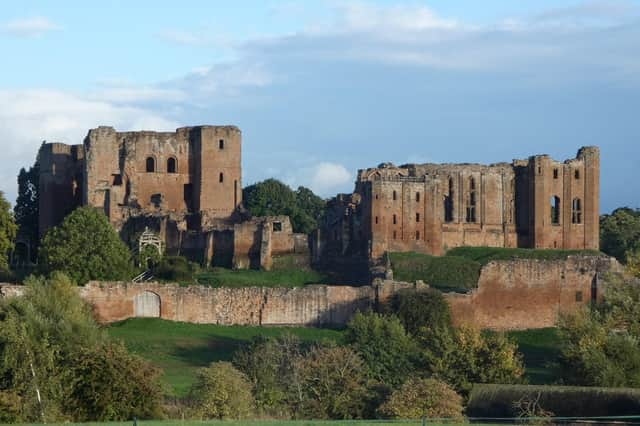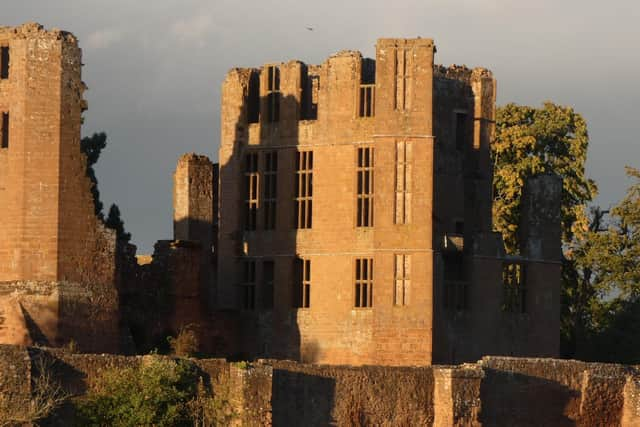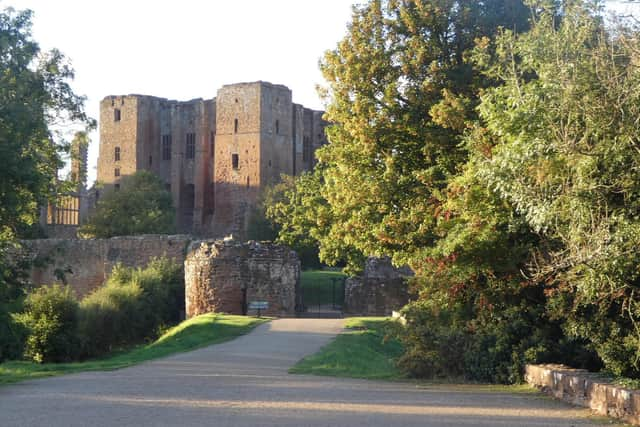Forgotten Local Histories: Did William Shakespeare really meet Queen Elizabeth I at Kenilworth Castle?


One of the most tantalising aspects of history is the tales of when two titans of an age meet each other in person.
The meeting of Admiral Nelson and the future Duke of Wellington in September 1805 at the Colonial Office in Downing Street – which happened to be the only time they ever met – is one such example.
Advertisement
Hide AdAdvertisement
Hide AdEven when two historical figures do not specifically meet, it is almost as tantalising to think of occasions when they occupied the same space at the same time and that they may even have crossed paths (even if inadvertently).


It is the possibility of this kind of meeting between Elizabeth I and William Shakespeare during the Princely Pleasures at Kenilworth Castle in 1575 (or whether the bard was even present at the event) which interests us this week.
Walter Scott’s novel Kenilworth, a fictional version of Elizabeth I’s visit to Kenilworth Castle in 1575, has done much to perpetuate the idea that the Queen and the famous playwright once met at this event.
However, we can comprehensively discount the idea of any Nelson/Wellington-style interaction between the two at the Princely Pleasures.
Advertisement
Hide AdAdvertisement
Hide AdThe historian GM Trevelyan critically remarked that, whilst Scott’s novels were generally well-researched (as we will see next week), by placing an adult Shakespeare into the Princely Pleasures in Kenilworth, Scott had ‘telescoped’ two opposite ends of the Elizabethan age together.


Indeed, Shakespeare was only eleven at the time, and he and his family were not of sufficient social standing to be given the opportunity to interact directly with the Virgin Queen (although he certainly performed for her in later life and may have met her then).
Of much greater probability is that, rather than meeting the Queen, the boy-Shakespeare was an outside witness to the Princely Pleasures at Kenilworth Castle, possibly watching events unfold from a distance.
As historian Helen Hackett (writing in 2009) observes, this idea was first proposed by Thomas Percy in 1794 and was ‘widely accepted at the time’.
Advertisement
Hide AdAdvertisement
Hide AdIn 1832, Percy’s theory was developed by J. Boaden, who argued that the Princely Pleasures served as an inspiration for the Bard, venturing that several lines from Act. II Scene 1 of A Midsummer Night’s Dream could reasonably be linked to the events at Kenilworth Castle.
This thesis, in Hackett’s words: ‘continues to be reiterated to this day’. The author Ronald Binns summarises well the general argument that Shakespeare was at the Princely Pleasures.
The lines in question appear when Oberon beseeches the fairy Puck to help him torment the Fairy Queen, Titania. As part of his speech, Oberon recounts a time where he ‘sat upon a promontory // and heard a mermaid on a dolphin’s back’ (II:1, lines 149-50).
This is supposedly a reference to an event that took place at Kenilworth Castle on 18 July 1575 where a soliloquy was delivered to Queen Elizabeth by Arion (a mythological character) whilst the latter stood on a boat shaped like a dolphin.
Advertisement
Hide AdAdvertisement
Hide AdHowever, as Binns points out, Oberon refers to a ‘mermaid’ not Arion, but the reference to the dolphin is deemed enough to conclude that Shakespeare is probably referring to the Princely Pleasures.
Nevertheless, Shakespeare is meant to be truer to what he saw at Kenilworth Castle in Act I, Scene 2 of Twelfth Night where the ship’s captain refers to Viola’s brother riding on a floating mast ‘like Arion upon the dolphin’s back’ after their ship is damaged.
Another reference to the Princely Pleasures, in the same speech in A Midsummer Night’s Dream, is Oberon’s description of ‘certain stars shot madly from their spheres’ (II:1, line 153) which is thought to allude to the firework displays that Shakespeare would have seen at Kenilworth Castle.
Binns argues that these firework displays would have made a significant impression on the boy-Shakespeare as, unlike today, they were an uncommon sight to most people.
Advertisement
Hide AdAdvertisement
Hide AdOverall, this is a logical argument. However, it should be noted that there is no evidence and no proof that William Shakespeare was present at the Princely Pleasures.
And it remains completely possible that Shakespeare, an avid reader, drew his inspiration from accounts that he had read about the event rather than personal insight.
Therefore, whilst the argument proposed by Boaden and developed by later scholars makes sense, it remains an unproved hypothesis.
Writing in 2005, Shakespeare biographer Peter Ackroyd states that the possibility of Shakespeare being present at the Princely Pleasures is ‘a pretty story…and a pretty story does no harm’. But is this statement true?
Advertisement
Hide AdAdvertisement
Hide AdThe renowned historian Prof. Sir David Cannadine has said that historians should view the past with ‘a warm heart but a cold eye’, and it is worth applying this approach to the debate over whether Shakespeare saw Elizabeth I’s visit to Kenilworth Castle.
In my view, I would like to say it is true that the Bard was there for the events of 1575; however, my cold eye says that there is not enough hard evidence to suggest that he was present. Therefore, I cannot say that it is true.
However, there is no harm in wandering along to the meadow where the mere once was and contemplating whether it could be a spot where, nearly 450 years ago, the future playwright may have witnessed the Princely Pleasures.
No, there is no harm in that at all.